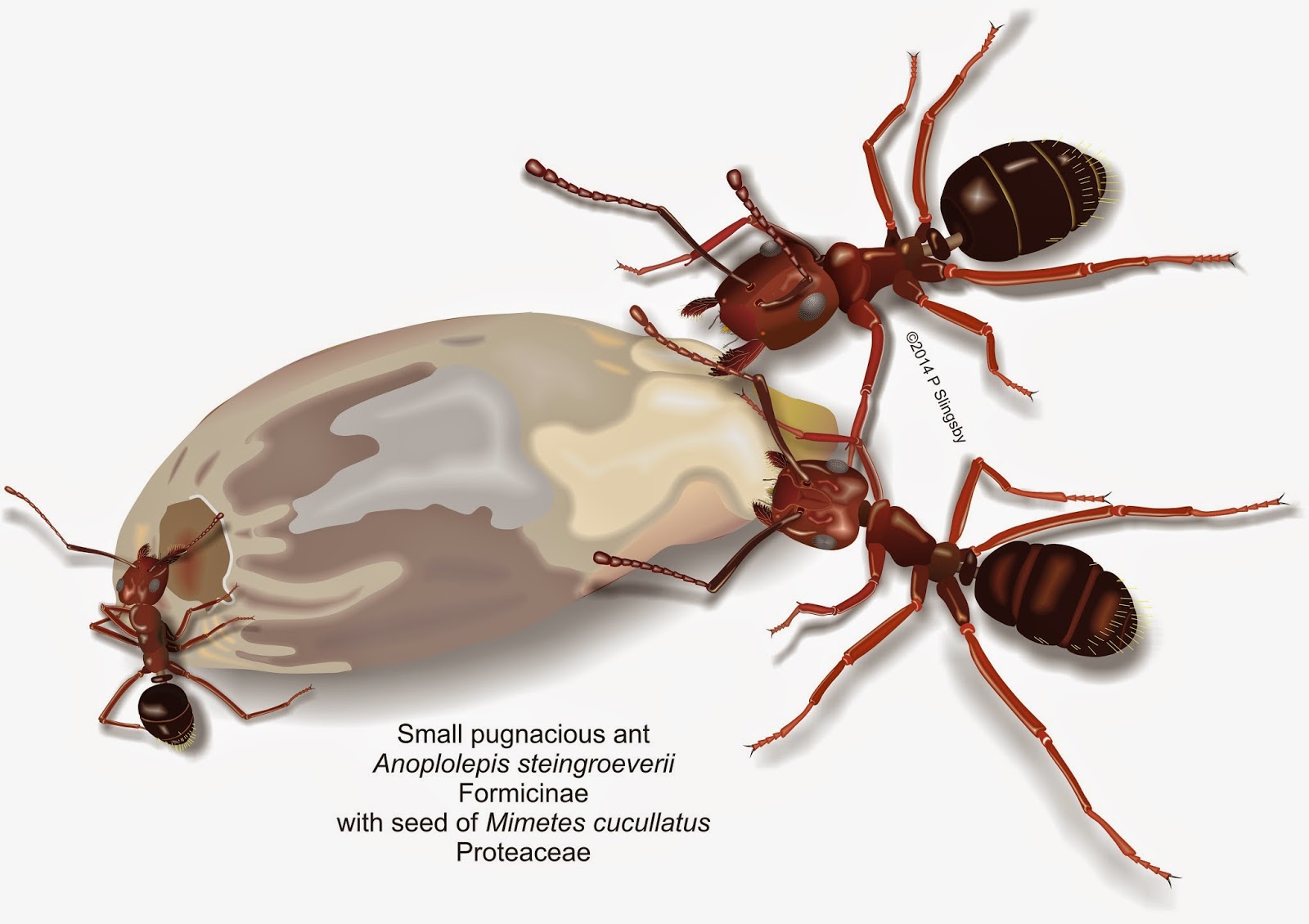Serotinous fynbos plants have a creaky way of surviving fire, says William Bond. Serotiny means that they don’t release any seed until they’re burnt. When the plants die, the seed is released from cones or other structures. This works well unless the fire-interval is too short. If a second fire occurs before a population of serotinous proteas or other plants has matured, the species will become locally extinct. There is no safe seed store, and the species has to repopulate the area from outside—if it can. To achieve this it has to produce lots of seeds that can be carried for many miles on the wind, a pretty random process.
The re-emergence of Mimetes stokoei, thought to be extinct for nearly fifty years, dramatically demonstrates the success of myrmecochory, especially for large-seeded plants. Using ants to store seed safely in the ground is a process that is 180̊ different from serotiny. The seed does not have to travel at all, it drops straight to the ground and is buried by ants within a few minutes in the same optimal soil as its parent. These plants need to produce fewer seeds, because the chance of successful regeneration after fire is much less random. There is a safe underground seed store and not all the seeds germinate after each fire. A very short interval between two fires may have no effect. Finally, we now know that such seeds can remain viable for long periods—probably a century or longer. Tiny populations of rare species can survive in specialised habitats, apparently indefinitely—which is good news for the future of fynbos diversity.
 |
| Mimetes stokoei |
The unusual case of the extremely rare Mimetes stokoei shows how sustained interest by careful and dedicated observers over many decades can be very rewarding. If, for example, a common Leucospermum had disappeared from that habitat for over fifty years, it might not have been noticed —unlike in the case of the Mimetes. The longevity of its seeds would never have been recorded.
Invasive ants such as the Argentine ant – Linepithema humile – massively disrupt these processes. They not only completely eliminate most of the indigenous ants involved in myrmecochory, they don’t bury the affected seeds. They merely eat the elaiosomes off in situ, leaving the seed unburied and unprotected, at the mercy of rodents, birds, etc. Preliminary studies have shown that if the spread of these ants into wild habitats is not checked, the future of thousands of fynbos plant species will be at risk.

No comments:
Post a Comment
Please feel free to add any comments, observation etc that might help make this site more useful to more people.